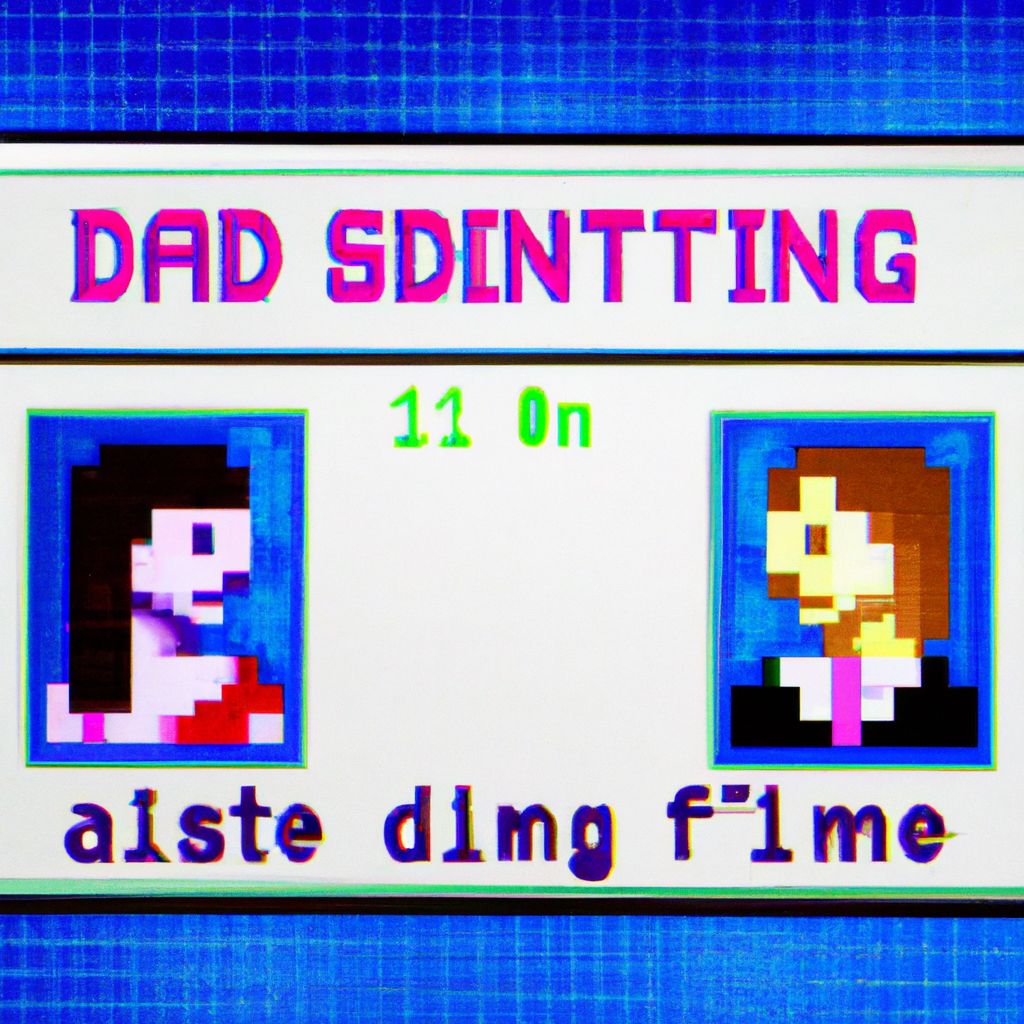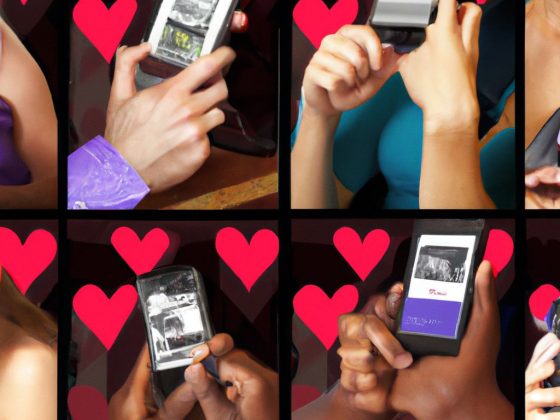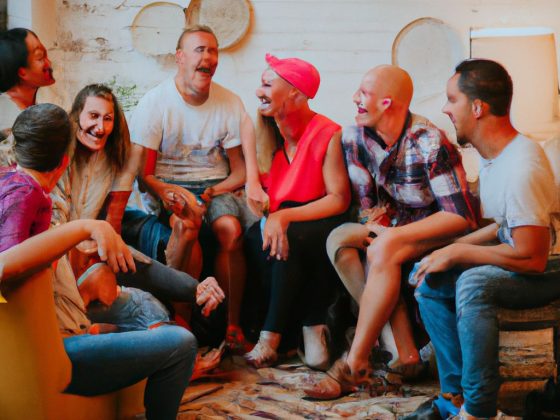Introduction
Online dating has become a ubiquitous part of modern romance, but have you ever wondered about its origins? In this section, we will explore the exciting journey of the first online dating website and the early forms of matchmaking that laid the foundation for this digital revolution. Prepare to travel back in time and discover the pioneers who paved the way for a whole new way of finding love.
First Online Dating Website
The dawn of online dating emerged during the early computerized matchmaking period. It was a huge milestone, setting the scene for more platforms. Match.com played a huge role in making online dating popular. But, we should look at what led to its creation.
- Personal Ads: Before online dating websites, people used personal ads to find potential partners.
- Computerized Matchmaking: As tech advanced, computer algorithms were used to match individuals based on compatibility.
- The Birth of Modern Online Dating: The first online dating website revolutionized matchmaking by bringing it to the digital age.
There are still some details of the first website that haven’t been mentioned. They help us understand its role in modern relationships and how it prepared for future advancements.
To understand online dating’s effect on society and relationships, it’s important to explore its history and evolution. Knowing this, we can better understand its present state and predict its future.
Don’t miss out on learning how social media and mobile apps have changed online dating platforms. Discover specialized dating apps and websites that cater to specific niche communities. And, see how COVID-19 has affected the industry and what lies ahead.
Start your own journey into the world of online dating. Use technology to connect with people, broaden your horizons, and maybe even find love or meaningful relationships. Embrace what modern online dating has to offer and start your own success story. Visit Dating 9 for more tips and advices on how to make the most out of online dating.
Throughout time, people have found creative ways to find love or at least a decent date. So if you don’t want to end up in an awkward situation when making plans, make sure you can spot a player when dating.
Early Forms of Matchmaking
Matchmaking in the past relied on interpersonal connections. Arranged marriages, family introductions and community gatherings were all part of this. Matchmakers, usually trusted members of the community, were pivotal in making these connections by evaluating compatibility and recommending people based on personal knowledge and social networks.
The introduction of computerized matchmaking changed the game. Sophisticated algorithms and databases meant dating services could analyze data to identify potential partners depending on compatibility factors. Human judgment was replaced by technology.
Match.com in 1995 brought online dating into a new era. People could now make profiles and message other users. Technology and user-generated content made it easier to find like-minded suitors.
Social media and mobile apps further changed the online dating landscape. People could now look for potential partners with shared interests or mutual friends. Location-based apps made it easier to find matches nearby.
Specialized dating apps and websites catered to specific demographics or hobbies. People could now find more tailored relationships. Singles active in life and love are now benefiting from this newfound access to more opportunities.
The COVID-19 pandemic caused a surge in virtual connections. People wanted companionship during lockdowns and social distancing. Video chats and virtual dates became the new norm.
Looking to the future, online dating is set to grow and change. Technology advancements like AI, virtual and augmented reality will improve the user experience. Deeper personalization and more immersive interactions hold promise for creating meaningful connections in the digital world.
The journey from newspaper ads to swiping left or right has been long – but ultimately rewarding!
The Emergence of Personal Ads
Personal ads date way back to the earliest days of the internet. In the 1960s, Operation Match was created – the first online dating site. It used a computerized system to match people based on their questionnaire answers. This set the stage for today’s online dating industry.
Come the 1980s, bulletin board systems (BBS) appeared. They gave users a place to share personal ads and find others with similar interests. These BBSs were run by individuals and small communities, creating a close-knit online dating space.
The 90s saw the internet boom – and personal ads had a huge shake-up. Online dating websites started to pop up, allowing users to make detailed profiles and search for matches. With so many sites, it became easier to access and use.
Nowadays, online dating is a multi-billion dollar business. Websites and apps allow people to find potential partners. The emergence of personal ads has really changed how people meet and build relationships. With just a few clicks, someone can access a massive pool of dates – never before seen!
Don’t miss out on the chance to meet someone special. Sign up for an online dating platform and join the thrilling world of digital romance.
The Rise of Computerized Matchmaking
Computerized matchmaking dates back to the start of the internet. Technology increased and online dating sites developed, changing the way people find each other. In the 60s, one of the first online dating sites was made with a computer algorithm to match individuals based on a questionnaire. This was the start of a new era for matchmaking with tech playing a huge role.
Technology got more advanced and the internet and personal computers were created in the ’80s. This led to platforms being designed for matchmaking. Users could make profiles and search for matches based on interests, hobbies, and personal preferences. The matching system grew more precise, leading to better pairings.
The ’90s saw online dating become more popular and well-known. Sites dedicated to connecting individuals looking for love flourished, with features and services to improve the matchmaking experience. It was now more convenient and accessible, giving more people the chance to find love.
Computerized matchmaking has changed a lot since it started but the core principle has stayed the same – using tech to bring folks together. AI and machine learning are making algorithms more clever at understanding human behavior and preferences, so the future of computerized matchmaking looks even brighter.
Pro Tip: When using online dating sites, be honest in your profile and interactions to increase your chances of finding a compatible match.
The Birth of Modern Online Dating: Match.com
Match.com, the pioneer of modern online dating, revolutionized the way people search for love. Discover the remarkable journey of Match.com as it expanded its reach and achieved unprecedented success in the world of online matchmaking. From capturing a large user base to creating countless love connections, Match.com has shaped the landscape of virtual romance. Get ready to dive into the phenomenal growth and achievements of this groundbreaking platform.
Expansion and Success of Match.com
The expansion and success of Match.com have been remarkable. It revolutionized online dating, with its user-friendly interface and innovative features. It gained a huge user base quickly.
During its early years, Match.com experienced rapid growth. People saw the benefits of online dating. It not only provided an easy way to meet potential partners, but also offered features to improve matchmaking. From search filters to algorithms, Match.com improved its services to fit users’ needs.
One aspect that contributed to the success of Match.com was social media and mobile apps. These tech advancements let people connect beyond their social circles. Facebook integration opened up new ways to find compatible matches based on interests and friends.
In recent years, specialized apps and websites have become popular. This diversified the dating landscape, giving people more options and better chances to find a partner.
The COVID-19 pandemic changed many things. Dating online rose as people sought alternative ways to meet people while following social distancing. The pandemic spurred virtual connections, leading people to Match.com for romance.
The future of online dating looks bright. Developments in tech will continue to shape the industry. AI algorithms will improve match recommendations, while VR could offer immersive dating experiences. As digital communication becomes more integrated into our lives, online dating will remain a popular way to seek romantic connections.
The Impact of Social Media and Mobile Apps
The influence of social media and mobile apps on dating is undeniable. These platforms have caused a huge shift in the dating landscape. Previously, websites like Match.com were the first to enable people to meet online. But, it was only when social media and mobile apps came along that their true power was realized.
Facebook, Instagram, and Twitter have enabled individuals to communicate more easily than ever before. It’s easier to find someone with similar interests or through mutual friends. Plus, social media has given us the opportunity to show the best versions of ourselves in our profiles.
Mobile apps, however, have had an even greater impact on dating. Apps like Tinder, Bumble, and Hinge have changed the way we meet and form connections. People can access them quickly and conveniently, and this has led to the rise of casual dating and hook-up culture.
These platforms have impacted behavior and relationships too. They offer direct communication through messaging and video calls, but they also raise questions about trust and honesty in online interactions.
To sum up, social media and mobile apps have had a major impact on dating. As technology advances, it’s likely that these platforms will continue to shape the way people navigate relationships.
The Influence of Facebook and Location-based Dating
Facebook’s entrance into the online dating world in 2012 transformed it. It enabled people to easily find partners thanks to its huge user base and built-in features.
Location-based dating apps, such as Tinder and Grindr, changed the online dating landscape by using geolocation tech to match users close by. These apps made dating more convenient and speedy.
Plus, thanks to Facebook and location-based dating, new features and innovations have appeared, like mutual friends and shared interests, aiding users in making more substantial connections.
They’ve also given users more control over their dating experience. They can now choose who they connect with based on shared interests, location, and mutual friends. This personalization has made online dating more desirable and successful.
To sum it up, the impact of Facebook and location-based dating has been immense in the way people link and discover potential partners online. These innovations have made online dating more accessible, convenient, and personalized, thus launching a new age of digital matchmaking.
Specialized Dating Apps and Websites
Specialized dating apps and websites have revolutionized the way people find love online. They focus on niche communities, connecting individuals who share similar interests, hobbies, or backgrounds. Plus, these platforms utilize compatibility matching systems to match users based on personality traits, values, and relationship goals. They also offer unique features related to the shared interest, enabling users to meet in person and network. Moreover, they prioritize user safety and privacy, implementing strict verification processes and secure messaging platforms.
The concept of specialized dating platforms dates back to the late 1990s, with JDate being one of the first. Since then, these apps and websites have continued to thrive and diversify, giving individuals a range of options to find their ideal match. All in all, specialized dating apps and websites are changing the landscape of online dating by providing a more targeted and effective way to find meaningful connections.
The Effects of the COVID-19 Pandemic
The COVID-19 pandemic has changed many aspects of society. Interactions and relationships have especially been affected. Social distancing and stay-at-home orders have made traditional dating difficult. As a result, online dating has seen a surge in popularity. It has become a vital tool for people to find companionship.
The need for connection has sparked a shift in dating. Virtual dates and video calls have become more common. The convenience and accessibility of these platforms have helped people form connections while still following social distancing guidelines.
Attitudes towards online dating have also changed. With limited in-person interactions, people are more open to meeting someone online. The stigma of online dating has declined. Even those who may have been reluctant are now giving it a try.
To summarize, the pandemic has increased the popularity and acceptance of online dating platforms. It has provided a safe and convenient way for people to connect during a time of physical isolation. Online dating is likely to remain an important tool for those seeking meaningful relationships.
The Future of Online Dating
The future of online dating is changing. It began in the mid-1990s, when the first site was created. This opened the door for more websites and apps. As it grew more popular, tech advancements made it easier to find compatible partners. With social media and mobile apps, users can connect from anywhere.
Personalization and niche dating platforms are also becoming more common. Algorithms can now match people based on interests, values, and preferences. They can even use virtual reality and augmented reality to make connecting more immersive. This could lead to virtual dating and virtual reality dates.
Conclusion: The Continued Growth of Online Dating
Online dating has seen major expansion over the years. This is due to our more frequent use of the internet, the ease of mobile apps, and the effect of the COVID-19 pandemic. The first online dating site was started in 1995. It changed how people meet and bond. This new way of dating became popular quickly and provided the groundwork for numerous other dating platforms.
The upsurge in online dating can be credited to several elements. Firstly, the web is a big part of our regular lives, making it easier for individuals to access dating sites and find potential partners. Secondly, online dating is a fast and effective way to meet people, breaking down geographical boundaries and allowing people to search for compatible matches based on individual desires.
Furthermore, the more frequent use of smartphones and mobile apps has contributed to the growth of online dating. These apps give users the chance to link with others anytime and anywhere, making the process even simpler and more accessible.
Additionally, the COVID-19 pandemic has also had an influence on the growth of online dating. With social distancing rules in place, traditional dating methods have been limited, causing more individuals to turn to online platforms to find love and companionship.
To sum up, the continued growth of online dating can be attributed to the increasing reliance on the internet, the convenience of mobile apps, and the impact of the COVID-19 pandemic. As technology continues to improve, it is likely that online dating will continue to evolve and play an important role in how people form relationships.



